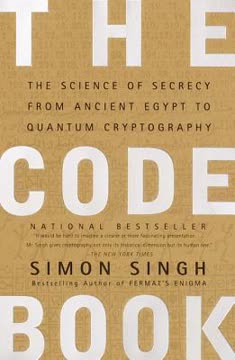Key Takeaways
1. The Riemann Hypothesis: A Prime Number Enigma
Prime numbers are the very atoms of arithmetic. The primes are the jewels studded throughout the vast expanse of the infinite universe of numbers that mathematicians have explored down the centuries.
The Riemann Hypothesis is one of the most important unsolved problems in mathematics. It attempts to explain the distribution of prime numbers, which are fundamental to number theory and have puzzled mathematicians for centuries. The hypothesis suggests that the seemingly random occurrence of primes actually follows a hidden pattern.
Key aspects of the Riemann Hypothesis:
- It connects prime numbers to complex analysis through the Riemann zeta function
- If proven true, it would provide deep insights into the nature of prime numbers
- The hypothesis has implications for many areas of mathematics and even physics
- Despite over 150 years of effort, it remains unproven, with a $1 million prize offered for its solution
2. From Ancient Greeks to Modern Cryptography: The Evolution of Prime Number Theory
For mathematicians they instil a sense of wonder: 2, 3, 5, 7, 11, 13, 17, 19, 23, … – timeless numbers that exist in some world independent of our physical reality.
Historical development of prime number theory spans millennia. The ancient Greeks, particularly Euclid, laid the foundation by proving the infinitude of primes. Over time, mathematicians developed increasingly sophisticated tools to understand these mysterious numbers.
Milestones in prime number theory:
- Euclid's proof of infinite primes (300 BCE)
- Fermat's Little Theorem (17th century)
- Gauss's Prime Number Theorem (19th century)
- Riemann's groundbreaking work (1859)
- Development of modern cryptography based on prime numbers (1970s-present)
3. Riemann's Revolutionary Approach: Imaginary Landscapes and Zeta Functions
Riemann had found a mathematical looking-glass through which he could gaze at the primes.
Bernhard Riemann's innovation was to approach prime numbers from a completely new perspective. He introduced complex analysis to number theory, creating a bridge between two seemingly unrelated areas of mathematics.
Riemann's key contributions:
- The Riemann zeta function, which connects prime numbers to complex analysis
- The concept of a "landscape" in complex space where the distribution of primes is represented
- The idea that the zeros of the zeta function hold the key to understanding prime distribution
- The Riemann Hypothesis itself, which predicts where these zeros should lie
4. The Quest for Proof: Mathematical Giants and Their Contributions
Hardy and Littlewood's great achievement marked the start of a journey that would continue into the twentieth century, with mathematicians now eager to push on in their exploration of Riemann's landscape.
Many brilliant mathematicians have contributed to the ongoing effort to prove the Riemann Hypothesis. Each has added new insights and techniques, gradually advancing our understanding of this complex problem.
Notable contributors and their work:
- G.H. Hardy and J.E. Littlewood: Proved infinitely many zeros lie on the critical line
- Atle Selberg: Showed a significant proportion of zeros are on the critical line
- Alan Turing: Developed methods for computing zeros of the zeta function
- Enrico Bombieri: Made significant advances in understanding the distribution of primes
- Andrew Odlyzko: Performed extensive computer calculations of zeta function zeros
5. Computers and the Riemann Hypothesis: Calculating Zeros and Testing Theories
Turing's machine may have broken down only a short way beyond the pre-war record for zeros, but it had taken the first step into an era in which the computer would take over from the human mind in the exploration of Riemann's landscape.
The advent of computers has dramatically accelerated research into the Riemann Hypothesis. Modern computing power allows for extensive calculations and tests of the hypothesis, providing empirical support and new insights.
Roles of computers in Riemann Hypothesis research:
- Calculating zeros of the zeta function to unprecedented precision
- Testing conjectures related to the distribution of primes
- Exploring patterns and relationships in prime number data
- Enabling collaborative efforts like the Great Internet Mersenne Prime Search (GIMPS)
- Assisting in the development and testing of new mathematical techniques
6. The Unexpected Applications: RSA Encryption and Internet Security
Prime numbers present mathematicians with one of the strangest tensions in their subject. On the one hand a number is either prime or it isn't. No flip of a coin will suddenly make a number divisible by some smaller number. Yet there is no denying that the list of primes looks like a randomly chosen sequence of numbers.
The study of prime numbers has found unexpected practical applications, particularly in cryptography. The RSA encryption system, widely used for secure internet communications, relies on the difficulty of factoring large numbers into their prime components.
Key aspects of RSA encryption:
- Utilizes two large prime numbers to create a public key
- Security relies on the computational difficulty of factoring large numbers
- Widely used for secure communication on the internet
- Demonstrates the practical value of "pure" mathematical research
- Highlights the connection between abstract number theory and real-world technology
7. Beyond RSA: Elliptic Curves and the Future of Cryptography
Elliptic curve cryptography has so far stood the test of time and has been enshrined in government standards. Mobile phones, palmtops and smart cards are happily implementing this new cryptography.
Elliptic curve cryptography represents the next frontier in mathematical encryption. This advanced technique offers stronger security with shorter keys, making it particularly suitable for mobile and low-power devices.
Features of elliptic curve cryptography:
- Based on the mathematics of elliptic curves over finite fields
- Offers equivalent security to RSA with much smaller key sizes
- More efficient for mobile and embedded devices
- Gaining widespread adoption in government and industry applications
- Demonstrates the ongoing interplay between pure mathematics and practical technology
Last updated:
FAQ
What's Fermat's Last Theorem by Simon Singh about?
- Exploration of Mathematical Mysteries: The book delves into the history and significance of Fermat's Last Theorem, a problem that remained unsolved for centuries until Andrew Wiles's breakthrough.
- Interconnectedness of Mathematics: It connects various mathematical concepts, such as prime numbers and the Riemann Hypothesis, illustrating their interwoven nature and contribution to mathematical thought.
- Cultural and Historical Context: The narrative provides a rich historical backdrop, detailing the lives of mathematicians and societal influences that shaped their work.
Why should I read Fermat's Last Theorem by Simon Singh?
- Engaging Storytelling: Simon Singh presents complex mathematical ideas in an accessible and engaging manner, making it suitable for both mathematicians and general readers.
- Inspiration from Great Minds: The book showcases the dedication and brilliance of mathematicians like Fermat, Wiles, and Riemann, inspiring readers to appreciate the beauty of mathematical exploration.
- Understanding Mathematical Concepts: Readers gain insights into fundamental mathematical concepts, such as prime numbers and the significance of proofs, sparking further interest in mathematics.
What are the key takeaways of Fermat's Last Theorem by Simon Singh?
- Importance of Proof: The book emphasizes the critical role of proof in mathematics, as demonstrated by Wiles's journey to prove Fermat's Last Theorem.
- Interrelation of Mathematical Problems: It shows how various mathematical problems, such as the Riemann Hypothesis, are interconnected, demonstrating the unity of mathematical thought.
- Cultural Impact of Mathematics: The narrative discusses how mathematical discoveries have influenced culture and society, reflecting the broader implications of mathematical inquiry.
What are the best quotes from Fermat's Last Theorem by Simon Singh and what do they mean?
- “The scientist does not study Nature because it is useful; he studies it because he delights in it, and he delights in it because it is beautiful.”: This quote by Henri Poincaré emphasizes the intrinsic motivation behind scientific inquiry, highlighting the beauty and wonder of mathematics.
- “A mathematical problem should be difficult in order to entice us, yet not completely inaccessible, lest it mock at our efforts.”: Hilbert's words reflect the balance between challenge and attainability in mathematics, suggesting that difficult problems drive progress.
- “There is the problem. Seek its solution. You can find it by pure reason, for in mathematics there is no ignorabimus.”: Hilbert's declaration asserts the belief that every mathematical problem is solvable, encouraging a spirit of inquiry and exploration.
What is the Riemann Hypothesis, as discussed in Fermat's Last Theorem by Simon Singh?
- Central Mathematical Problem: The Riemann Hypothesis is one of the most significant unsolved problems in mathematics, concerning the distribution of prime numbers.
- Connection to Prime Numbers: It posits that all non-trivial zeros of the Riemann zeta function lie on a critical line, crucial for understanding prime number patterns.
- Historical Significance: The hypothesis was formulated by Bernhard Riemann in 1859, and its proof remains a major quest in mathematics.
What is the significance of prime numbers in Fermat's Last Theorem by Simon Singh?
- Building Blocks of Mathematics: Prime numbers are described as the "atoms of arithmetic," essential for constructing all other numbers and foundational in number theory.
- Mystery and Chaos: Despite their fundamental importance, prime numbers appear random and unpredictable, captivating mathematicians for centuries.
- Applications in Modern Technology: Prime numbers have practical applications in fields like cryptography, crucial for securing digital communications.
How does Fermat's Last Theorem by Simon Singh relate to modern mathematics?
- Foundation for Number Theory: The book illustrates how Fermat's Last Theorem and the Riemann Hypothesis are cornerstones of modern number theory.
- Influence on Mathematical Research: The quest to solve these problems has inspired generations of mathematicians, shaping research agendas and methodologies.
- Interdisciplinary Connections: Developments in number theory intersect with fields like physics and computer science, underscoring the relevance of mathematical inquiry.
What methods did Andrew Wiles use to prove Fermat's Last Theorem, as discussed in Fermat's Last Theorem by Simon Singh?
- Modular Forms and Elliptic Curves: Wiles's proof involved deep connections between modular forms and elliptic curves, previously thought unrelated.
- Ribet's Theorem: He built upon Ribet's theorem, linking Fermat's Last Theorem to the Taniyama-Shimura-Weil conjecture, providing a pathway for his proof.
- Rigorous Proof Structure: Wiles's meticulous approach ensured every step was validated, culminating in a landmark achievement in mathematics.
What challenges did Andrew Wiles face in proving Fermat's Last Theorem, as discussed in Fermat's Last Theorem by Simon Singh?
- Decades of Work: Wiles spent nearly seven years working in secrecy, facing numerous setbacks and challenges.
- Initial Flaws: After announcing his proof, Wiles discovered a critical flaw, requiring him to rethink and revise his approach.
- Collaboration and Support: He received support from colleagues, particularly Richard Taylor, highlighting the importance of community in mathematical endeavors.
How does Fermat's Last Theorem by Simon Singh illustrate the nature of mathematical discovery?
- Trial and Error: The book emphasizes that mathematical discovery often involves a process of trial and error, central to advancing knowledge.
- Collaboration and Competition: It highlights the collaborative and competitive nature of the mathematical community, fostering innovation and progress.
- Beauty and Aesthetics: Mathematicians are driven by the desire to solve problems and the appreciation of elegance and harmony in mathematics.
What role did computers play in the exploration of the Riemann Hypothesis, as discussed in Fermat's Last Theorem by Simon Singh?
- Computational Power: Computers have enabled mathematicians to calculate vast numbers of zeros of the Riemann zeta function, providing empirical evidence.
- Evidence Gathering: While computers cannot prove the hypothesis, they gather evidence supporting its validity, bolstering belief in its truth.
- Limitations of Computers: Despite their power, computers cannot replace the creative and intuitive aspects of mathematical thinking, serving as tools rather than substitutes.
What is the significance of the prize for proving Fermat's Last Theorem mentioned in Fermat's Last Theorem by Simon Singh?
- Wolfskehl Prize: Established by Paul Wolfskehl, the prize motivated mathematicians to pursue a proof of Fermat's Last Theorem.
- Historical Impact: The prize attracted many mathematicians to Göttingen, contributing to the development of number theory.
- Personal Motivation: For Andrew Wiles, the prize served as a childhood inspiration, illustrating how personal stories intertwine with broader mathematical pursuits.
Review Summary
Fermat's Last Theorem captivates readers with its engaging narrative of mathematical history and the quest to solve a 350-year-old problem. Simon Singh expertly weaves together biographies of mathematicians, explanations of complex concepts, and the thrilling story of Andrew Wiles' ultimate proof. While some readers found the mathematical explanations challenging, most praised Singh's ability to make the subject accessible and exciting. The book is widely recommended for its blend of history, science, and human perseverance, appealing to both math enthusiasts and general readers alike.
Similar Books

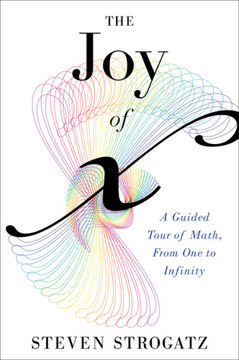
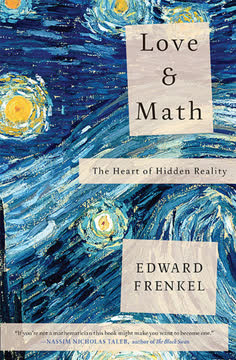
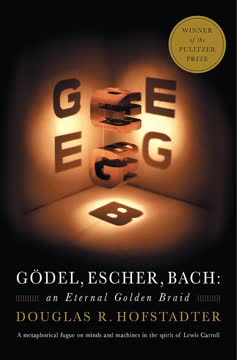

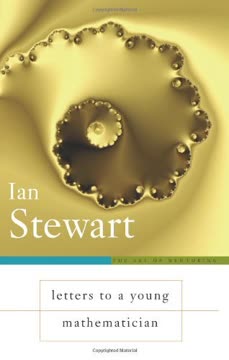
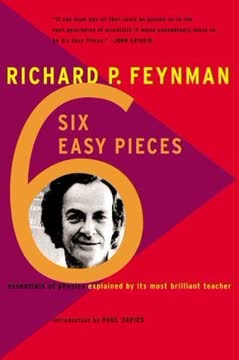
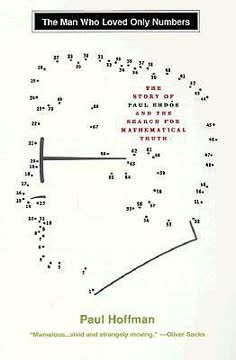
Download PDF
Download EPUB
.epub digital book format is ideal for reading ebooks on phones, tablets, and e-readers.

